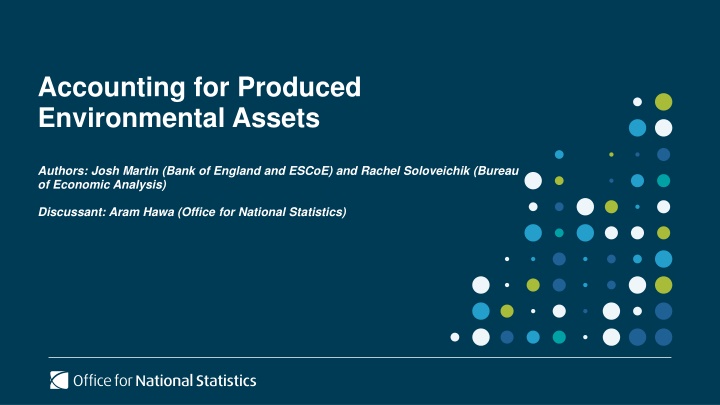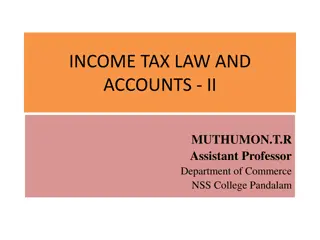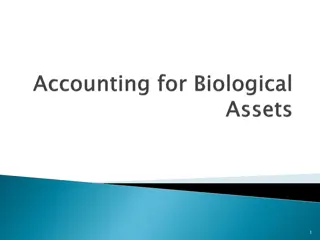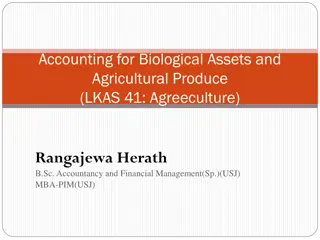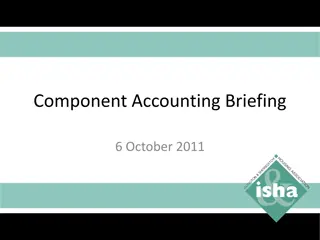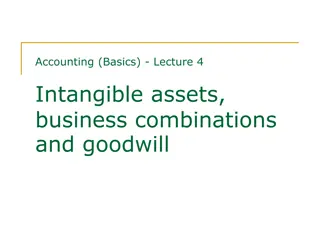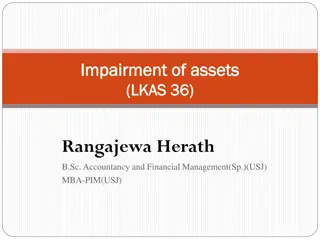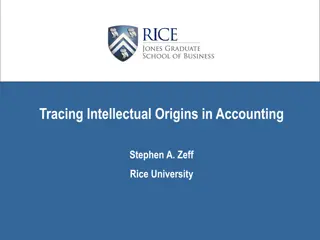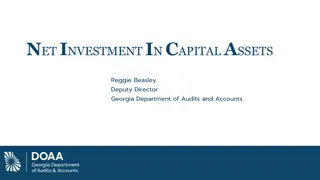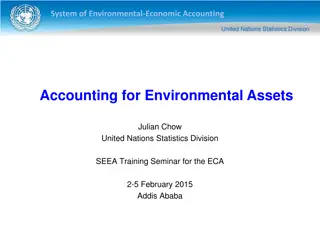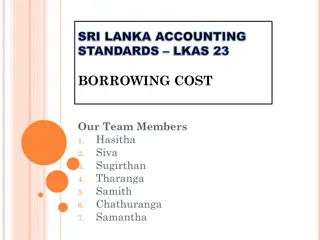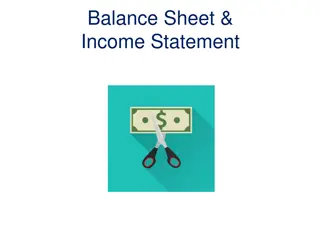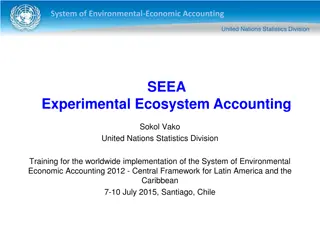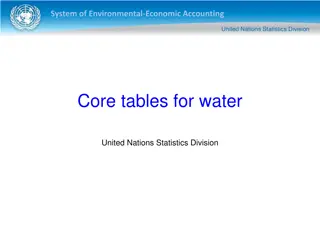Accounting for Produced Environmental Assets
This paper discusses the significance of measuring produced environmental assets like cultivated biological resources, terminal costs, and land improvements. It emphasizes the need to better account for these asset classes to capture significant capital investments that may currently be overlooked. By integrating environmental considerations into National Accounts, it aims to provide a more comprehensive understanding of economic activity and its impacts on natural capital.
Download Presentation

Please find below an Image/Link to download the presentation.
The content on the website is provided AS IS for your information and personal use only. It may not be sold, licensed, or shared on other websites without obtaining consent from the author.If you encounter any issues during the download, it is possible that the publisher has removed the file from their server.
You are allowed to download the files provided on this website for personal or commercial use, subject to the condition that they are used lawfully. All files are the property of their respective owners.
The content on the website is provided AS IS for your information and personal use only. It may not be sold, licensed, or shared on other websites without obtaining consent from the author.
E N D
Presentation Transcript
Accounting for Produced Environmental Assets Authors: Josh Martin (Bank of England and ESCoE) and Rachel Soloveichik (Bureau of Economic Analysis) Discussant: Aram Hawa (Office for National Statistics)
Purpose of paper to highlight the potential for greater attention on these (usually overlooked) asset classes, where significant capital investment could be going unmeasured Focusing on three produced fixed asset classes: Cultivated biological resources Terminal costs Land improvements
Background How can National Accounts better reflect environmental issues, including natural capital and the cost of environmental damage caused by economic activity (externalities of production) Already conceptually included in SNA 2008 Integration between the System of Environmental Economic Accounting and SNA in the 2025 update Unmeasured environmental protection output using a costs of production approach is equivalent to about 5% of UK GDP (Agarwala and Martin, 2022)
Bad examples UK water company sewage discharge Cyanide spill in canal in West Midlands Shell oil spill in Gulf of Mexico Good examples UK 2023 Green Finance Strategy Environmental Land Management Program
Cultivated biological resources What makes it a produced asset? Non-farming sectors also invest in these assets: - Residential landscaping - Managed forests and prairies - Zoos, safaris and gardens
Cultivated biological resources (continued) Construction companies and households spend considerable amounts on landscaping plants Census of Agriculture data (unit price) Investment varied between 0.1% - 0.4% of GDP, whilst CFC under 0.1%
Terminal costs costs associated with acquiring or disposing of assets Future disposal and clean-up costs are recorded as consumption of fixed capital (CFC) and actual disposal and clean-up expenditures are recorded as investment Case study of nuclear bombs in the US
Land improvement the result of actions that lead to major improvements in the quantity, quality or productivity of land, or prevent its deterioration. Activities such as land clearance, land contouring, creation of wells and watering holes Josh and Rachel posit some additional activities including: Clearing of silt and waste from streams and rivers (flood protection) Removal of soilborne parasites or other dangerous species Soil erosion prevention
Land improvement (continued) Major land improvement work in 1800 s not captured in current US national accounts. Use of Census of Agriculture data on improved farmland acreage (forest clearance etc.) Worth 1.5%-2% in late 1800 s, falling to 0.3% between 1900-1970
Thank you Josh & Rachel!
